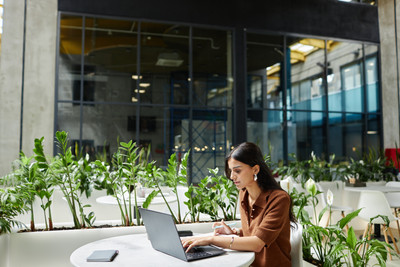Up-And-Coming Outdoor Design Trends for 2015 – and Beyond
Posted by Jason Wyrwicz on Apr 7th 2015
Can an outdoor design be both on-trend and timeless?
We believe so.
After all, a plantscape is made up of many interacting elements – plants and flowers, containers and planters, pavers and other materials – which can be replaced gradually over time so that a landscape remains fresh and interesting without needing to be completely overhauled year after year. It helps to start with a design concept that has an element of staying power. Here, we’ve detailed five trends in outdoor design for 2015 that will breathe bold freshness into a plantscape while remaining relevant in the future.
A shift toward modern and contemporary design elements
Cincinnati-based landscape architect Gayle Frazer has noticed an increase of clients “wanting a lot more [of] modern and contemporary in landscape design.” The key to this design style is simplicity and order, with a touch of boldness. Frazer goes on to explain, “Instead of putting something at 90 degrees, you can make a strong statement with a line at 70 degrees. Instead of putting in a curve, you can make it a circle… Sometimes [it] can also mean rectilinear: all square, no curves at all.” Thinking beyond plant selection, architectural elements are a unique way to use this trend– particularly with decking materials. A space that normally feels closed in can become very open and modern simply by experimenting with railings. Martha Wassermann, a landscape designer also based in Cincinnati, has seen an increased use of cable railings that “really open a view of the yard” as well as “panels of automotive glass [where] there is a post every 6-7′ apart with slots holding the panels of glass” in lieu of a traditional deck railing.
Goodbye stamped concrete, hello pavers and natural stone
Stamped concrete appears to be on the way out, making way for pavers and natural stone to become the building blocks for outdoor spaces. Natural stone used in a patio setting can really up the wow factor, bringing in just enough boldness without feeling over-the-top. Similarly, the last several years has seen pavers increasingly become available in a wider variety of sizes and colors, with Wassermann noting that earth tones especially seem to be popular.
Harmonizing a building’s architecture with landscape design
As the economy continues to come around, this year is fast becoming the year of “major facelifts,” as Wassermann puts it. There is a desire to harmonize the outside features of a building or residence with the landscape design. As Frazer argues, “As long as you’re redesigning the outdoor space, why not do an extension of the indoors?” Exterior paint choices for trim, doors or, rethinking siding color, or even painting brick are all great places to experiment with elements of harmony.
Sustainability in the landscape
Sustainability is a trendy term that’s been around for quite a few years, but in the world of landscape design it means “more durable, more native,” according to Frazer. In other words, a low maintenance collection of plants and architectural elements that have an appearance of effortlessness. The key to pulling off this trend is simplicity – “planting things that like the same pH level, moisture level and level of sun,” says Wassermann, will decrease the amount of work needed throughout the design as a whole. Group plants in blocks while focusing on species that are hardy and, if possible, native to your particular area.
Less monoculture, more variety in plant selection
This trend is especially true in choosing trees and shrubs. In the past, a design might have been comprised of one to two types of trees in a given area, which does give a seamless look. However, it can also mean mass replacement or treatment if that particular variety becomes susceptible to a disease or insect. Planting a variety of trees brings more visual interest (and allows for that boldness we talked about earlier) and limits your risk factor long term – “Instead of putting 30 trees of the same type, I may put seven and three and five… more diversity, just in case we have a bug problem” says Frazer. The beauty of these five trends is that they all can work together. A touch of boldness is the main theme throughout – choosing panels of glass on a traditional wood deck, instead of a wooden railing; using a more limited number of plants with a variety in species to bring visual interest but also limit risk; or balancing a landscape design with exterior living space to give an overall look of harmony and modernity. The result? An outdoor design that is sophisticated and on-trend today, and will be easy to adapt – and enjoy – for years to come.



